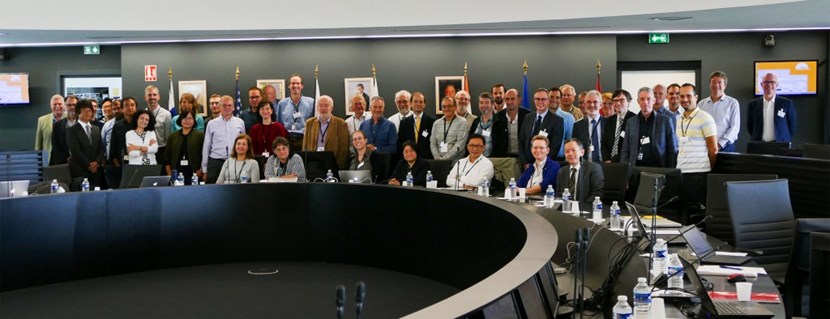ITER NEWSLINE
-
Operational phase
Experts of the world, unite!
Ken Blackler, Deputy Head for Operations
Operational phase | Experts of the world, unite!
Late September, the ITER Project called together experts from operating tokamaks and other scientific facilities around the world in order to consider the future commissioning and operations of the ITER Tokamak and plant systems.

Experts from around the world are assisting the ITER Organization with the detailed preparations required for the operational phase of the machine.
These experts form the ITER Operations Network, established to support the ITER Organization in making the necessary detailed preparations for the operational phase of the machine. The meeting was a chance for the experts to be updated on the current status of the project and to discuss the areas for which the ITER Organization needs support and how to further involve the worldwide community in future operations.
Experts from the following institutions are currently part of the ITER Operations Network:
CEA Institute for Magnetic Fusion Research, IRFM (France)
ENEA - Frascati (Italy)
EPFL - Swiss Plasma Center (Switzerland)
Fusion for Energy (Europe)
General Atomics (US)
Instituto de Plasmas e Fusao Nuclear, IST (Portugal)
Karlsruhe Institute of Technology, KIT (Germany)
Laboratory for Plasma Physics, Ecole Royale Militaire/Koninklijke (Belgium)
Max-Planck-Institut für Plasmaphysik, IPP (Germany)
National Fusion Research Institute, NFRI (Korea)
National Institutes for Quantum and Radiological Science and Technology, QST, Naka (Japan)
Southwestern Institute of Physics, SWIP (China)
UKAEA - Culham Centre for Fusion Energy, CCFE (UK)
"The group looked at the functions and tools needed in the control room, the software that would support the operators, and control room design. The experts also considered how to plan for system commissioning, how the experimental needs lead into the definition of plasma pulses, and how the parameters are verified and loaded into the control systems.
First Plasma is planned for 2025, but the first commissioning activities will start much sooner, beginning with building services and utilities, chilled water, heat rejection, and finally the cryogenic plant. These plant systems will then enter into preliminary operations to support the commissioning of the rest of the ITER plant and Tokamak.
By the end of the meeting a work program for the next year was established. The process of cooperation and contribution is just getting started; in the future these experts will provide regular input to the ITER Organization, review documents, and contribute knowledge and information. Regular meetings are planned and—under the ITER Project Associate scheme—experts will also have the chance to come work at the ITER Organization for short stays or longer periods.
return to the latest published articles







